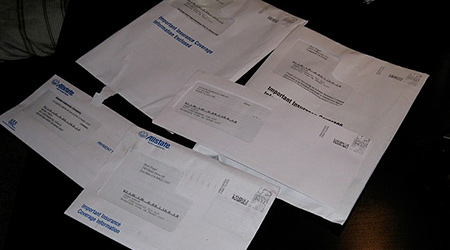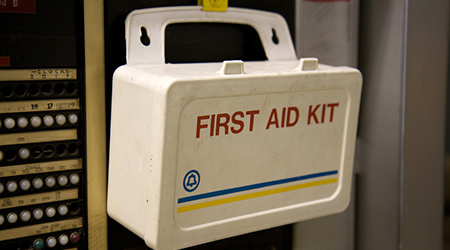Of course you make sure that you’ve got awesome tunes handy for your commute and a handful of napkins in case you sneeze or spill your coffee, but do you have the things you really need in your car? You never know when an emergency will pop up and you don’t want to be caught unprepared. So before you grab your keys again and drive off into the sunset, make sure your trunk is stocked with these seven items.
1. Owner’s manual:

There isn’t much of a reason to take the owner’s manual out of your car, but there are plenty of reasons to leave it in your glove compartment. If an unfamiliar light comes on, you can check the manual to see what the problem is. If you need to troubleshoot a problem, you can read through the manual. Even if you’re just trying to figure out how to change your clock for Daylight Saving Time, the manual is your go-to guide for everything you need to know about your make and model.
2. Jumper cables:

Even if you have a brand new battery, jumper cables are a must-have. You’re set if you ever need a jump (just add another car), or you can provide a helping hand and engine to someone else who’s car won’t start. Even if you know nothing about cars, jumper cables can make you an automatic hero if you stop to help someone out with their battery.
3. Flashlight:

If you have car troubles at night, a flashlight could be the only thing standing between you and a horror movie scenario. A flashlight not only provides light that will make you feel safer and let you see what you’re doing, it can also serve as protection, you know, just in case. You should also keep spare batteries with you so your flashlight doesn’t die just as you’re fixing something important (or hear a strange noise).
4. Proof of insurance:

Many states require that you have your proof of insurance in the car at all times. If you’re pulled over and don’t have it, you could face a ticket. It’s a smart thing to have with you in all states, though, so you can give your insurance information to other drivers in the event of a wreck. Make sure you always have an up-to-date proof of insurance and that your coverage hasn’t lapsed.
5. First aid kit:

A first aid kit is useful when you’re on the side of the road when an illness or injury occurs, but is also just as needed anywhere you go where you’ll be close enough to go out to your car for your supplies if something happens. If you’re in an accident, you can treat minor wounds with gauze and antiseptics, but you can just as easily use it if your new shoes are giving you blisters during work; just run out to the car and grab a band-aid!
6. Pen and paper:
<%image(pen_and_paper.jpg|450|250|pen_and_paper.jpg)%>
When you’re in a wreck, whether it’s car-totaling or just a fender bender, a pen and paper is going to come in handy. How can you leave a note on someone’s car in a parking lot without it? (You better leave a note!) Use it to write down your insurance information, another driver’s information, an officer’s name, or just your grocery list when you think of something in between errands. It’s guaranteed you will need it at some point.
7. Fix-A-Flat:
<%image(fix_a_flat.jpg|450|250|fix_a_flat.jpg)%>
This little can of magic is a great temporary solution to a flat tire. It reinflates the tire enough that you can drive on it while also sealing the leak so you can make it to a repair shop. That beats the process of jacking up your car, taking off the lugnuts, changing the tire, putting the lugnuts back, all on the side of the road and then driving to the shop. You can buy Fix-A-Flat at auto parts stores or even at many grocery stores.

 To request an appraisal, please complete the sections below:
To request an appraisal, please complete the sections below: